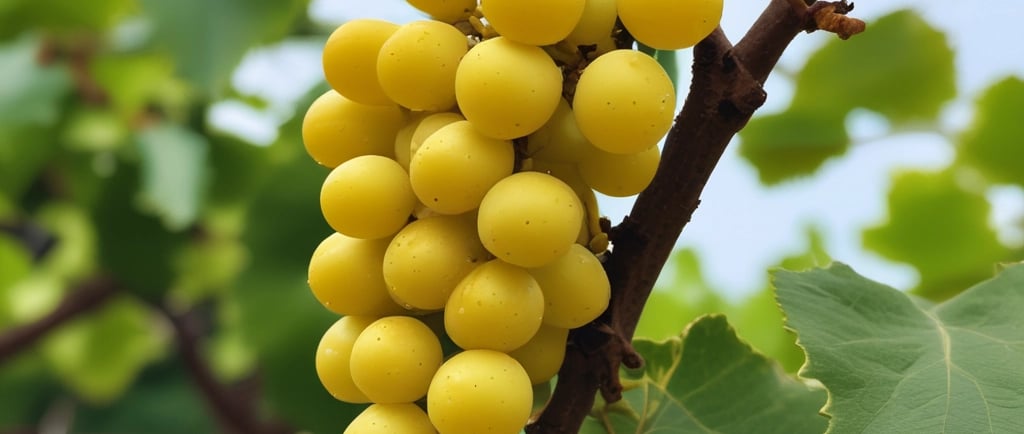Il Grechetto di Todi
The Todi's Gold
9/20/20253 min read


Grechetto: An Ancient Grape with a Renewed Identity
Grechetto is a white grape variety deeply rooted in the winemaking tradition of Umbria and central Italy. Over the centuries, some of its most fascinating stories have been lost. The name “Grechetto” suggests a link with ancient Greece, Magna Graecia, and with the “Greek” grapes mentioned in later centuries. Yet, modern research has revealed that what we call Grechetto today is not a single entity, but rather a group of biotypes—primarily two: clone G5 (Grechetto di Todi, also known as Grechetto Gentile) and clone G109 (commonly referred to as Grechetto di Orvieto).
Origins and History
Like many local varieties of central Italy, Grechetto evolved over centuries, adapting to the terroirs of Umbria, Lazio, Tuscany, and the Marche. Ancient sources describe the introduction of “Greek” vines into southern Italy and their later spread into central regions.
In Italy’s National Register of Vine Varieties (CNVV), the G5 and G109 clones are officially recognized as two distinct biotypes—closely related but with different characteristics.
Genetic analysis shows that G5 and G109 share at least one allele for each microsatellite locus examined, suggesting a very close relationship, most likely of the parent–offspring type. However, it is still unclear which is the “parent” and which is the “child.”
The G5 Clone (Grechetto di Todi / “Grechetto Gentile”)
Territory and Diffusion
This clone is predominant in the Todi area of Umbria and lends its name to the Todi DOC, established in 2010 with regulations recognizing the central role of Grechetto Gentile (G5) in the region’s white wines.
Ampelographic Traits
Medium-sized, often trilobed pentagonal leaves
Medium to large oval berries
Clusters of medium density, pyramidal or cylindrical, sometimes with small wings
Ripening is generally earlier than G109, allowing for earlier harvests when freshness and acidity are to be preserved.
Organoleptic Profile
Grechetto G5 is known for elegance and finesse: delicate fruity aromas (apple, pear, white fruit), white flowers, fresh notes, and a balanced structure. Compared to G109, it shows less of the characteristic almond-like finish, leaning more towards a clean, refined profile.
The G109 Clone (Grechetto di Orvieto)
Territory and Diffusion
G109 is more common in the Orvieto area and neighboring regions (Lazio, Umbria) and has long been central to the production of Orvieto’s white wines. It is also present in several other DOC regulations across Lazio and Tuscany.
Ampelographic Traits
More compact clusters
Berries with thicker, more resistant skins
Later ripening (late September to early October) compared to G5
Organoleptic Profile
This clone tends to yield more robust wines with a marked character and a touch of rusticity, requiring careful vinification. Aromas can show almond and dried fruit notes, with less freshness if harvest is delayed. The thicker skins make it suitable for more structured styles, barrel aging, late harvest, or even botrytized wines.
Grechetto di Todi: A Territorial Identity
The Todi DOC was created specifically to enhance the Grechetto di Todi (G5 / Grechetto Gentile), requiring at least 50% Grechetto in the blend. These wines are typically straw yellow in color, with delicate aromas, vibrant freshness, and a balanced palate. They are often described as “gentle” wines, reflecting the alternative name Grechetto Gentile
The hilly terroirs of Todi, with their soils, elevations, and diurnal temperature swings, favor the G5 clone, leading to steady ripening, preserved acidity, and aromatic finesse.
Modern Reflections and Perspectives
In recent years, growers and researchers have worked to clarify the differences between G5 and G109, to avoid confusion in appellation rules and labeling, and to highlight their unique territorial identities.
Clone choice is crucial not only for wine style but also for vineyard management. G5, with its earlier and more reliable ripening, is well-suited to vintages with climatic variability. G109, on the other hand, offers greater structure and aging potential when carefully managed.
Passito and botrytized Grechetto wines (mostly from G109) are attracting renewed interest, while lighter, fresher, and more “natural” styles are emerging from G5, showcasing its elegance and finesse.
Conclusion
Grechetto is a central Italian white variety that is not a single, uniform grape, but a family of clonal variations with their own history, genetics, and vocation.
Grechetto di Todi (G5 / Grechetto Gentile): elegant, aromatic, fresh, refined—ideal for those seeking finesse, balance, and drinkability with personality.
Grechetto di Orvieto (G109): structured, characterful, with aging potential, suitable for complex, late-harvest, or sweet wines.
Within Todi, the Grechetto G5 has carved out a strong territorial identity that reflects its climate and landscape, deserving attention from those wishing to explore the many nuances of this fascinating grape variety.
